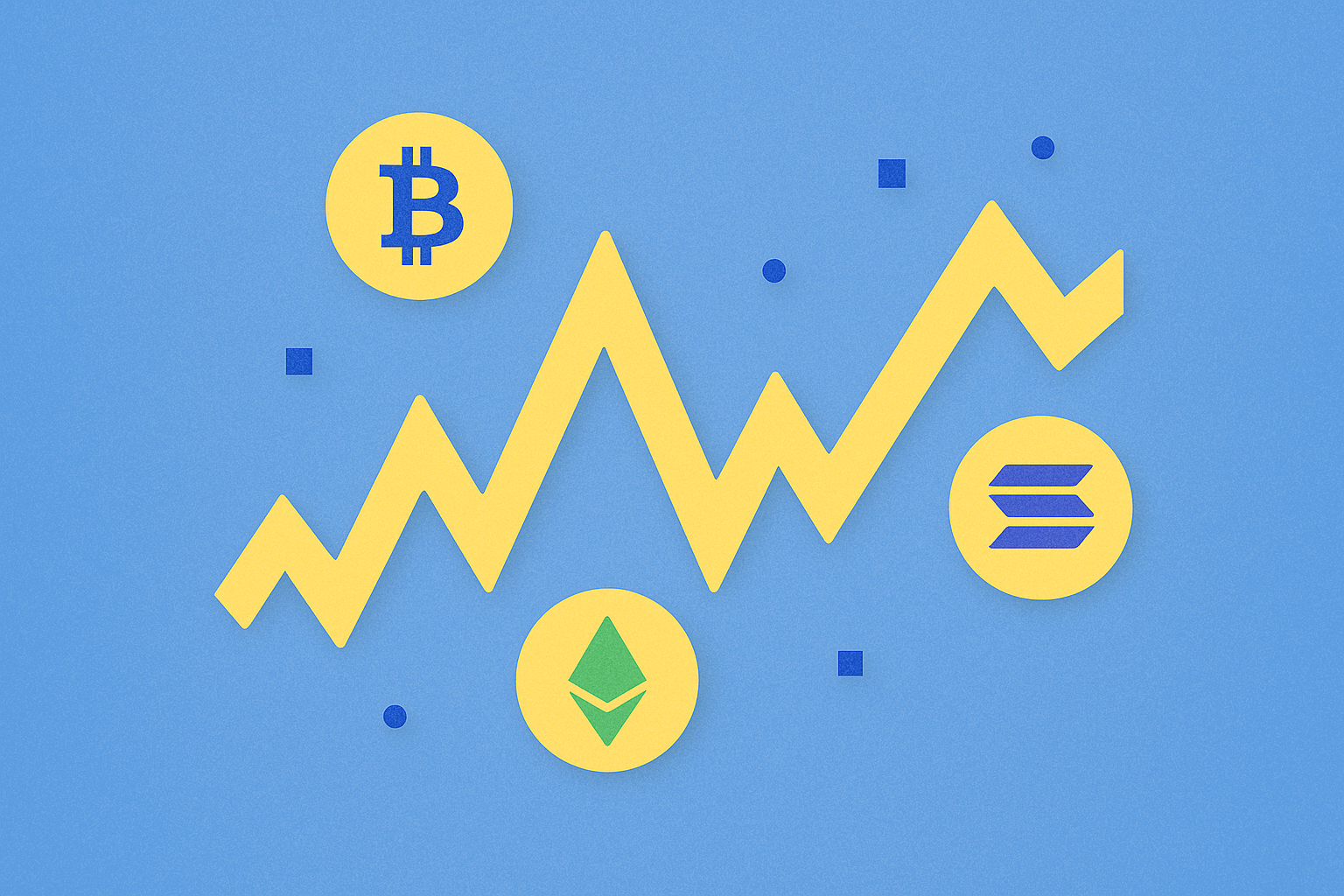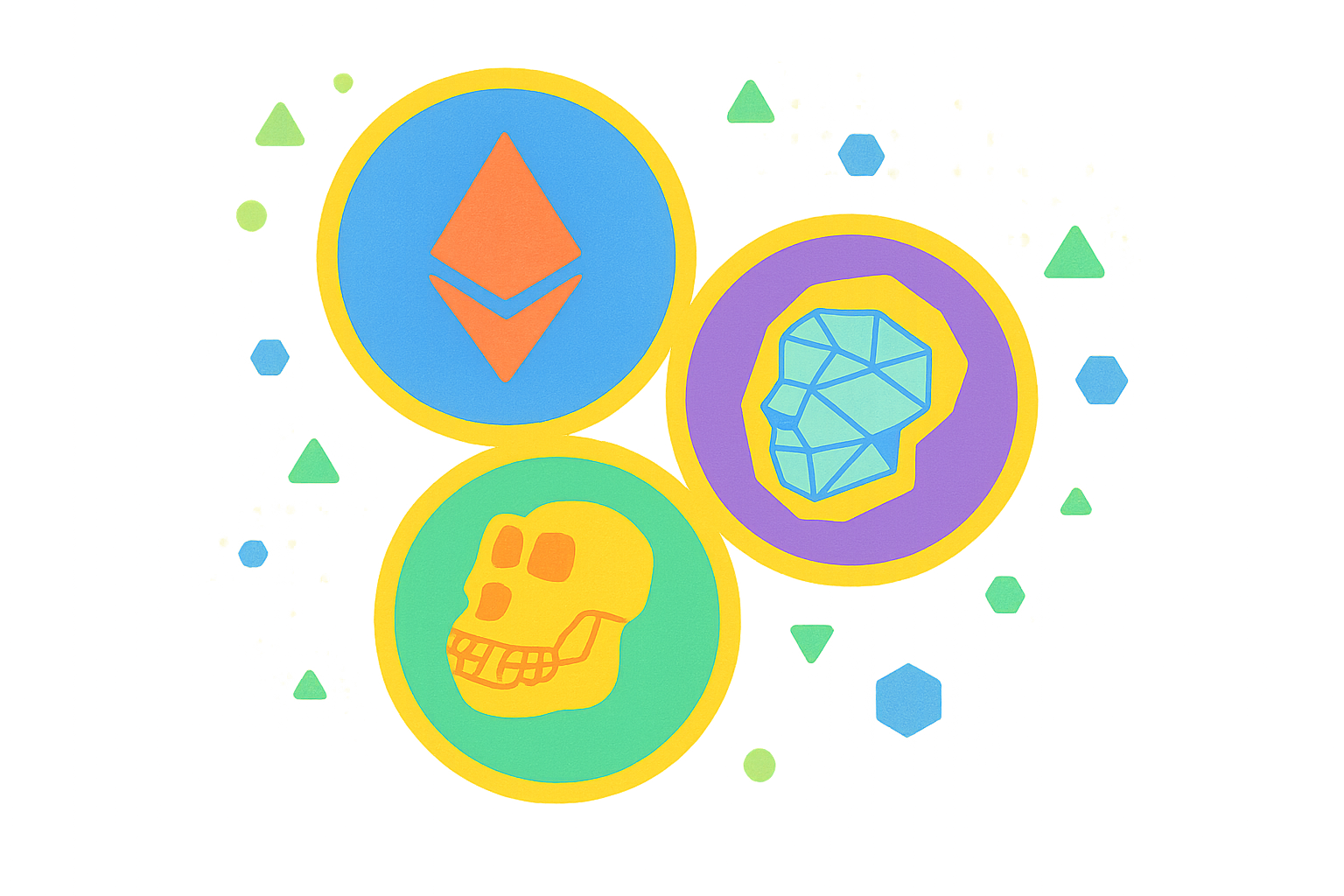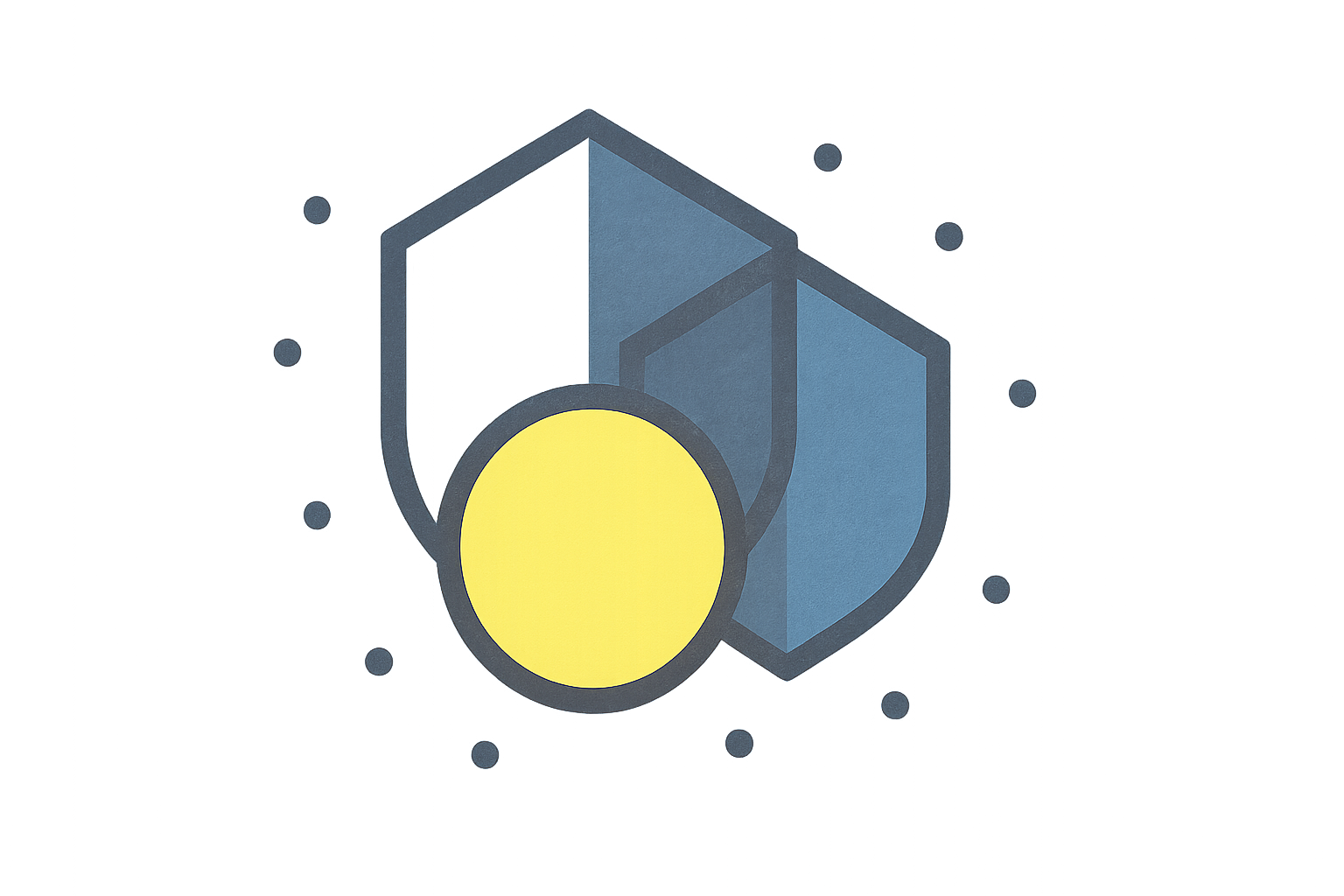Web3 Cüzdanlarını Anlamak: Dijital Varlık Yönetiminin Geleceğine Kapsamlı Bir Rehber

Dijital Varlık Yönetiminin Evrimi: Web3 Cüzdanları Açıklandı
Web3 cüzdanlar dijital varlıkları yönetme şeklimizi devrim niteliğinde değiştirmiştir ve geleneksel finans sistemlerinden önemli bir kaymayı işaret etmektedir. Bu yenilikçi araçlar, kullanıcılara dijital servetleri üzerinde eşi benzeri görülmemiş bir kontrol sunarak merkeziyetsiz web'e geçiş kapıları olarak hizmet etmektedir. 2025 itibarıyla, Web3 cüzdanları basit kripto para depolama çözümlerinden, tokenlar, değiştirilemeyen tokenlar (NFT'ler) ve hatta blockchain ağlarında tokenleştirilmiş gerçek dünya varlıkları (RWAs) dahil olmak üzere çeşitli dijital varlıkları yönetme yeteneğine sahip sofistike platformlara evrim geçirmiştir.
Web3 cüzdanlarının yolculuğu, temel kripto para depolama yetenekleriyle başladı ancak zamanla çeşitli veri türleri ve varlık sınıflarını destekleyecek şekilde genişledi. Bu genişleme, Web3 cüzdanlarını dijital ekonominin çeşitli ihtiyaçlarına hitap eden kapsamlı “süper uygulamalar” haline dönüştürdü. Merkeziyetsiz tanımlayıcıların (DID'ler) entegrasyonu, bu cüzdanların işlevselliğini daha da artırarak kullanıcıların dijital kimliklerini varlıklarıyla birlikte yönetmelerine olanak tanıdı. Bu evrim, blockchain ekosisteminin artan karmaşıklığını ve olgunluğunu yansıtmakta, çünkü Web3 cüzdanları artık merkeziyetsiz uygulamalar (DApp'ler), DeFi protokolleri ve blockchain tabanlı oyunlarla etkileşimleri kolaylaştırmada kritik bir rol oynamaktadır.
Web3 cüzdanları ile geleneksel dijital cüzdanlar arasındaki en önemli farklardan biri, kullanıcılara sundukları kontrol seviyesidir. Web3 cüzdanları, kullanıcılara özel anahtarlarının tam sahipliğini sağlar, bu da dijital varlıkları üzerinde tam kontrol anlamına gelir. Web3 cüzdanlarının bu yönü, blockchain teknolojisinin temel ilkeleriyle - merkeziyetsizlik ve kullanıcı gücü - mükemmel bir şekilde örtüşmektedir. Web3 teknolojilerinin benimsenmesi devam ederken, bu cüzdanlar, kullanıcıların merkeziyetsiz web ile etkileşim kurmaları için birincil arayüz olarak giderek daha önemli hale gelmektedir.
Web3 Cüzdanlarının Gücünü Açma: Özellikler ve Faydalar
Web3 cüzdanları, kripto para meraklıları ve blockchain geliştiricileri için vazgeçilmez araçlar haline getiren birçok özellik ve fayda sunar. Web3 cüzdanlarının en önemli avantajlarından biri, geliştirilmiş güvenlik özellikleridir. Üçüncü bir tarafın özel anahtarları tuttuğu geleneksel saklama cüzdanlarının aksine, Web3 cüzdanları yalnızca kullanıcının özel anahtarlarına erişimini sağlamak için gelişmiş kriptografik teknikler kullanır. Bu kendi kendine saklama modeli, geçmişte merkezi borsa platformlarını rahatsız eden büyük ölçekli hack riskini önemli ölçüde azaltır.
Web3 cüzdanlarının bir diğer önemli avantajı, farklı blockchain ağları arasında birlikte çalışabilirlikleridir. Modern Web3 cüzdanları, birden fazla kripto para birimini destekler ve çeşitli blockchain protokolleriyle sorunsuz bir şekilde etkileşimde bulunabilir. Bu çapraz zincir işlevselliği, kullanıcıların çeşitli dijital varlık portföylerini tek bir arayüzden yönetmelerine olanak tanır, bu da kullanıcı deneyimini büyük ölçüde basitleştirir. Dahası, Web3 cüzdanları, aracıların gerekliliğini ortadan kaldırarak DApp'lerle doğrudan etkileşimi kolaylaştırır, böylece kullanıcıların merkeziyetsiz finans (DeFi) etkinliklerine, NFT pazar yerlerine ve diğer blockchain tabanlı hizmetlere kolayca katılmalarını sağlar.
Web3 cüzdanlarında akıllı sözleşme işlevselliğinin entegrasyonu, varlık yönetimi ve otomasyon için yeni olanaklar açmıştır. Akıllı sözleşme cüzdanları, karmaşık işlemleri gerçekleştirebilir, çoklu imza güvenliği uygulayabilir ve hatta önceden belirlenmiş koşullara dayalı olarak tekrarlayan ödemeleri veya yatırımları otomatikleştirebilir. Web3 cüzdanlarının bu programlanabilirlik yönü, yenilikçi blok zincir tabanlı uygulamalar ve hizmetler geliştirmek isteyen geliştiriciler ve işletmeler için özellikle çekicidir.
Web3 Cüzdan Manzarasında Gezinmek: 2025 için En İyi Seçenekler
Web3 ekosistemi olgunlaştıkça, her biri benzersiz özellikler sunan ve farklı kullanıcı ihtiyaçlarına hitap eden birkaç cüzdan lider konumuna yükseldi. Bir web3 cüzdanı seçerken, kullanıcılar güvenlik özellikleri, kullanıcı arayüzü, desteklenen varlıklar ve DApp'lerle entegrasyon gibi faktörleri değerlendirmelidir. Yeni başlayanlar için, kullanıcı dostu arayüzler ve sağlam eğitim kaynakları önemli hususlar arasındadır.
İşte 2025 itibarıyla bazı önde gelen Web3 cüzdanlarının karşılaştırması:
| Cüzdan Adı | Tür | Ana Özellikler | En İyi İçin |
|---|---|---|---|
| MetaMask | Tarayıcı Uzantısı / Mobil | Geniş DApp desteği, ETH ve ERC-20 token'ları | DeFi meraklıları |
| Trust Cüzdan | Mobil | Çok zincirli destek, NFT depolama | Mobil öncelikli kullanıcılar |
| Ledger Live | Donanım + Yazılım | Soğuk depolama, Çoklu para birimi | Güvenlik odaklı kullanıcılar |
| Gate Cüzdan | Mobil / Web | Zincirler arası takaslar, DeFi entegrasyonu | Tüccarlar ve yatırımcılar |
Gate Cüzdan, Gate tarafından geliştirilen, hem acemi hem de deneyimli kullanıcılar için kapsamlı özellik seti ile öne çıkmaktadır. Kullanıcılara ticaret ve varlık yönetimi için birleşik bir deneyim sunarak Gate’in ticaret platformu ile sorunsuz entegrasyon sağlar. Cüzdanın sağlam güvenlik önlemleri ve kullanıcı dostu arayüzü, Web3 ve DeFi dünyasını keşfetmek isteyenler için mükemmel bir seçim yapmaktadır.
Web3 Cüzdan Güvenliğini Ustaca Yönetmek: Kullanıcılar için Temel İpuçları
Dijital varlıkları yönetirken güvenlik en önemli faktördür ve Web3 cüzdanları, kullanıcıların fonlarını korumak için birkaç gelişmiş özellik içerir. Ancak, kullanıcılar da varlıklarının güvenliğini sağlamak için proaktif adımlar atmalıdır. En kritik güvenlik uygulamalarından biri, özel anahtarların ve yedek kelimelerin doğru bir şekilde yönetilmesidir. Bunlar, yetkisiz erişimi önlemek için güvenli bir şekilde çevrimdışı, tercihen birden fazla yerde saklanmalıdır.
İki faktörlü kimlik doğrulama (2FA), çoğu Web3 cüzdanında standart bir güvenlik özelliği haline gelmiştir ve yetkisiz erişime karşı ek bir koruma katmanı ekler. Kullanıcılar her zaman 2FA'yı etkinleştirmeli ve en yüksek güvenlik seviyesi için donanım güvenlik anahtarları kullanmayı düşünmelidir. Ayrıca, düzenli yazılım güncellemeleri, olası güvenlik açıklarını kapatmak ve cüzdanın en son güvenlik geliştirmeleriyle donatıldığından emin olmak için çok önemlidir.
Web3 cüzdan güvenliğinin bir diğer önemli yönü, imzalamadan önce işlem detaylarını anlama ve doğrulamaktır. Birçok Web3 cüzdanı, kullanıcıların bir işlemin sonuçlarını yürütülmeden önce önizlemelerine olanak tanıyan işlem simülasyonu özelliklerini artık içermektedir. Bu, hataları önlemeye ve potansiyel dolandırıcılıklara veya kötü niyetli akıllı sözleşmelere karşı koruma sağlamaya yardımcı olur.
Web3 ekosistemi gelişmeye devam ederken, cüzdan sağlayıcıları tarafından uygulanan güvenlik önlemleri de gelişmektedir. Biyometrik kimlik doğrulama, çoklu imza cüzdanları ve sosyal kurtarma seçenekleri giderek daha yaygın hale geliyor ve kullanıcılara daha sağlam ve esnek güvenlik çözümleri sunuyor. Kullanıcılar, en son güvenlik en iyi uygulamaları hakkında bilgi sahibi olarak ve modern Web3 cüzdanlarının sunduğu gelişmiş özelliklerden yararlanarak, dijital varlıklarını güvende tutarken merkeziyetsiz web'de güvenle gezinme imkanı bulabilir.

Gate Cüzdan: 2025'te Web3 için Güvenli Çok Zincirli Çözüm

Spot Cüzdan Güvenliği: 2025 için Temel Özellikler ve Kullanım Kılavuzu

Web3 Cüzdan nedir? Yeni Başlayanlar için Kapsamlı Bir Rehber

Web3 cüzdan Yeni Başlayanlar Rehberi: Merkezi Olmayan Finansın Yeni Dünyasını Keşfetmek

En iyi Web3 cüzdan: 2025'te akıllı ve güvenli varlık yönetiminin yeni bir çağı

Web3 Cüzdan nedir? 2025'te Web3 Cüzdanlar için Kapsamlı Bir Rehber

Kripto piyasasındaki dalgalanmaları başarıyla yönetmek: Etkili volatilite alım satım stratejileri

Başarılı Swing Trading İçin En Önemli Göstergeler

Kendinize Özgü Bir Ape Sahip Olun: NFT Satın Alma Rehberi

Blockchain Teknolojisinde Kriptografik Hash Fonksiyonlarının Anlaşılması

Dijital para birimlerinde çifte harcama sorununu anlamak





